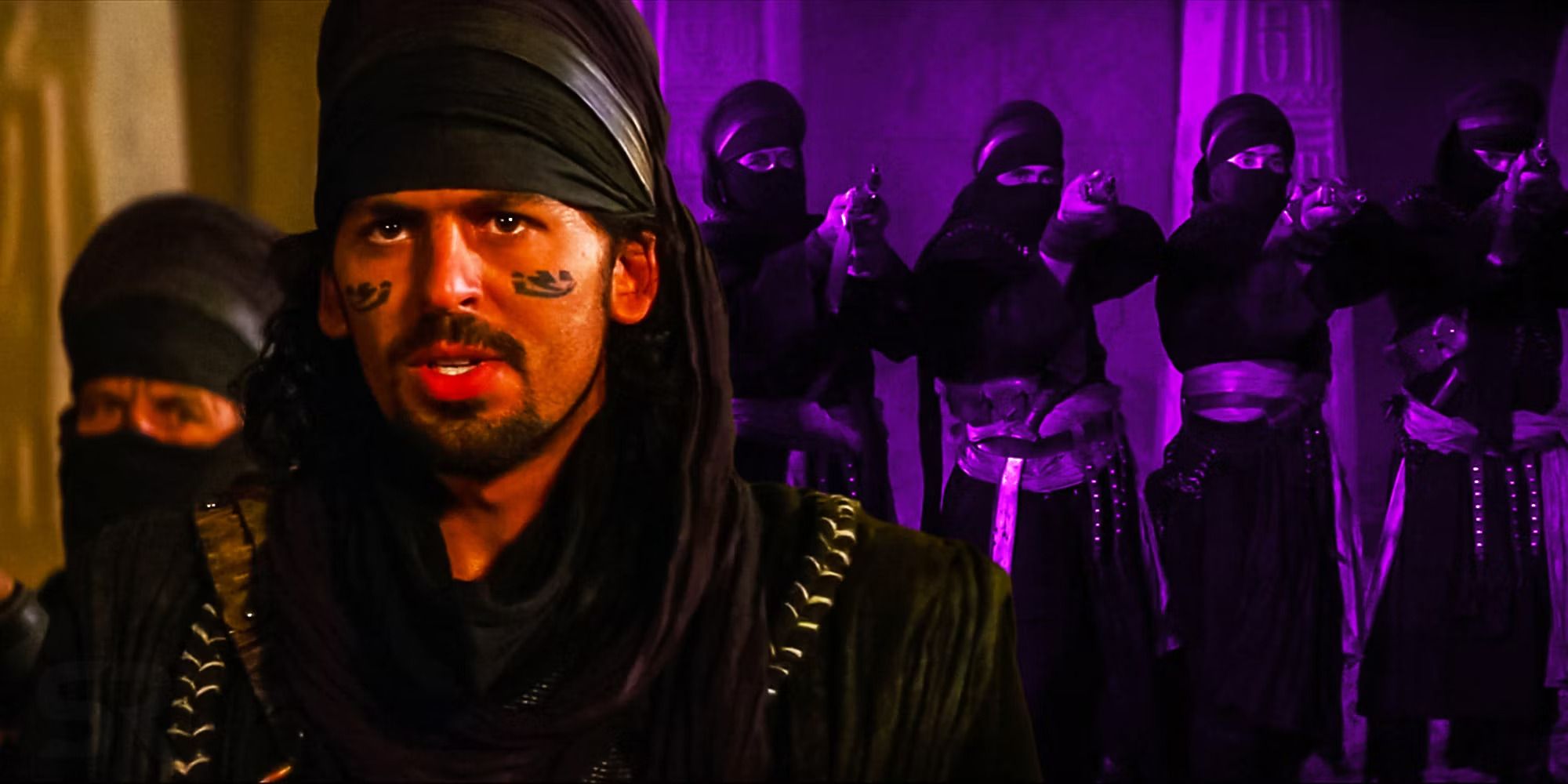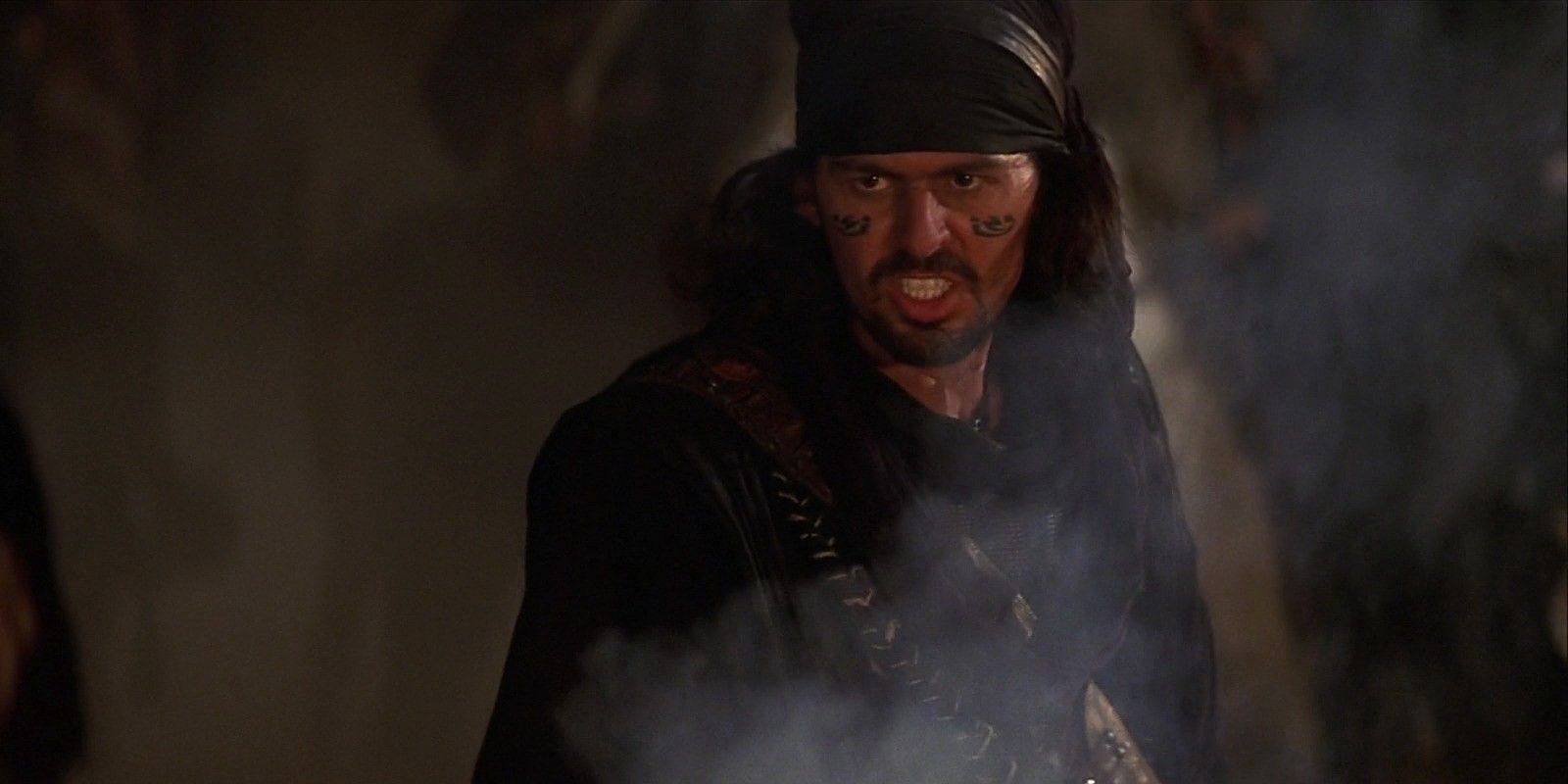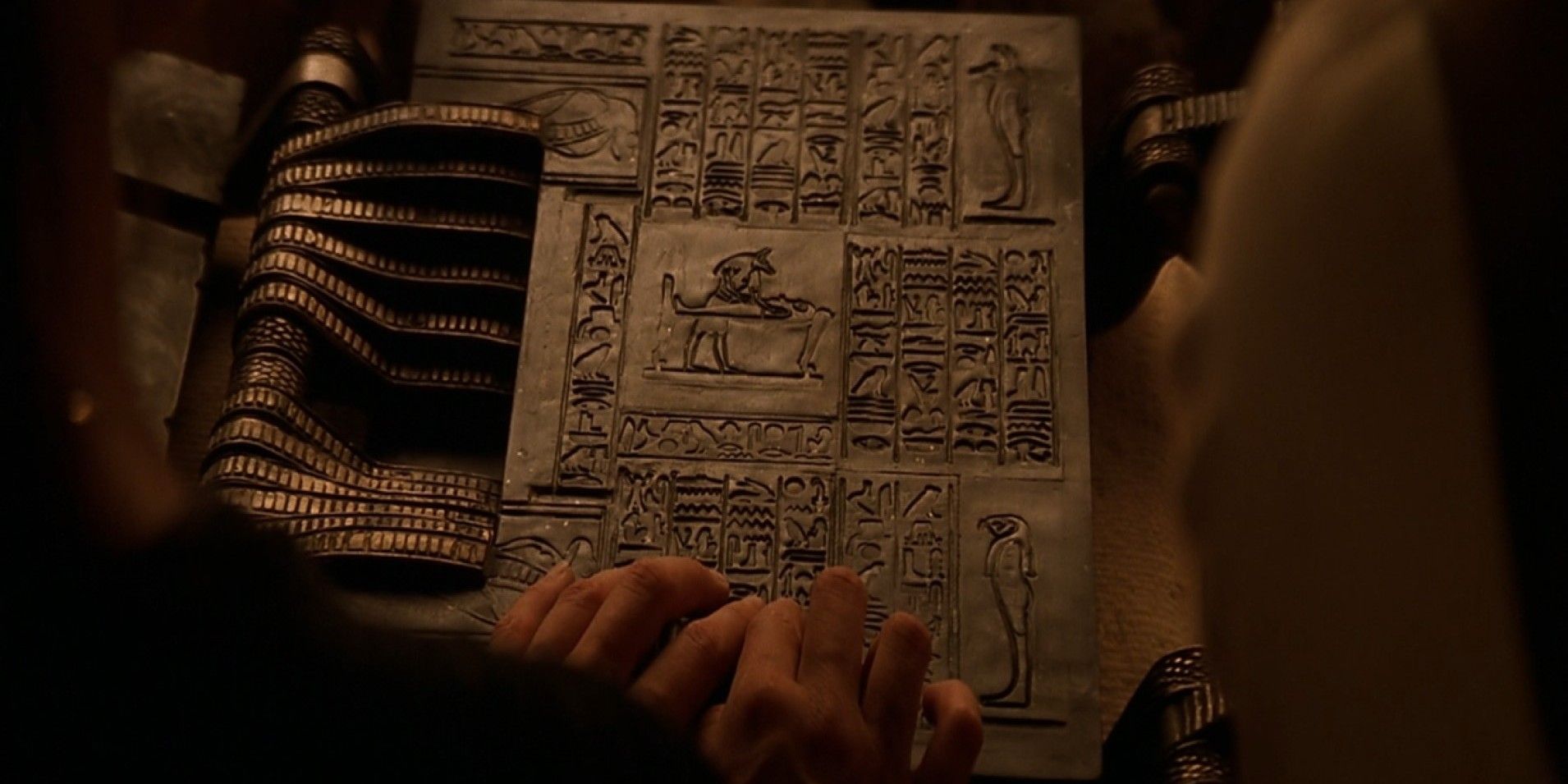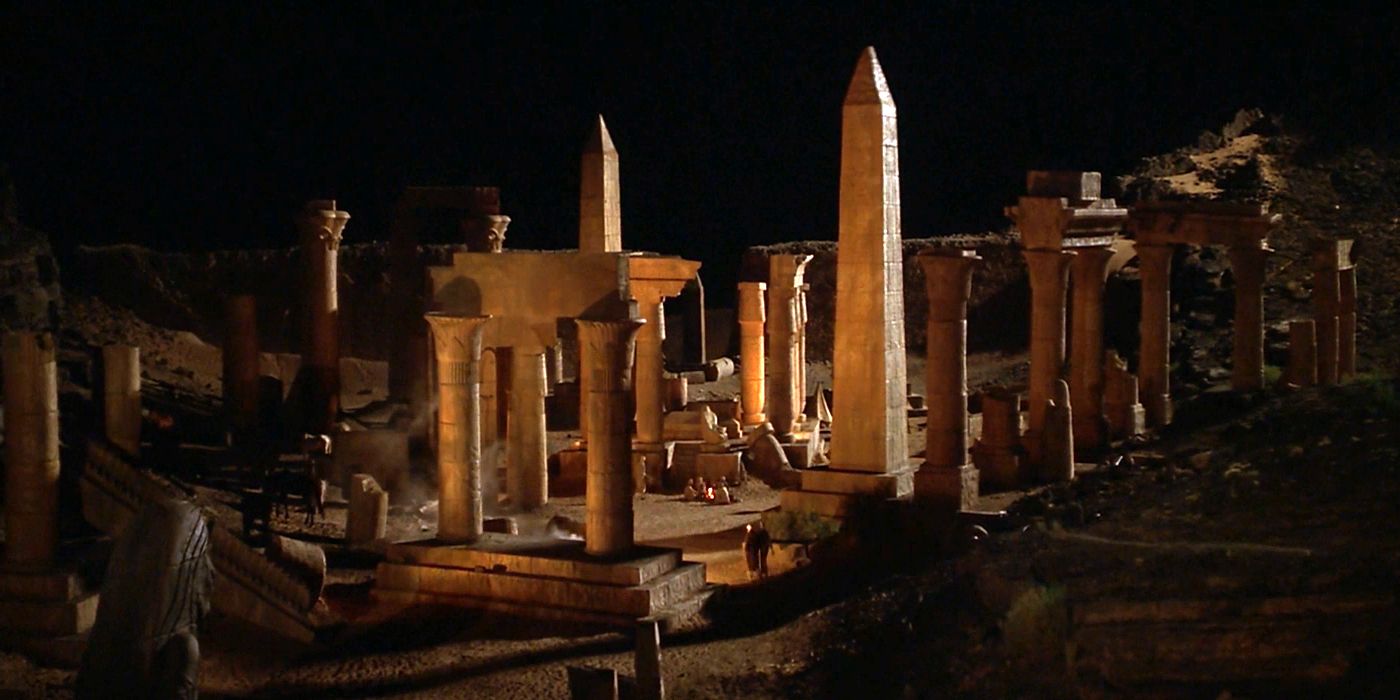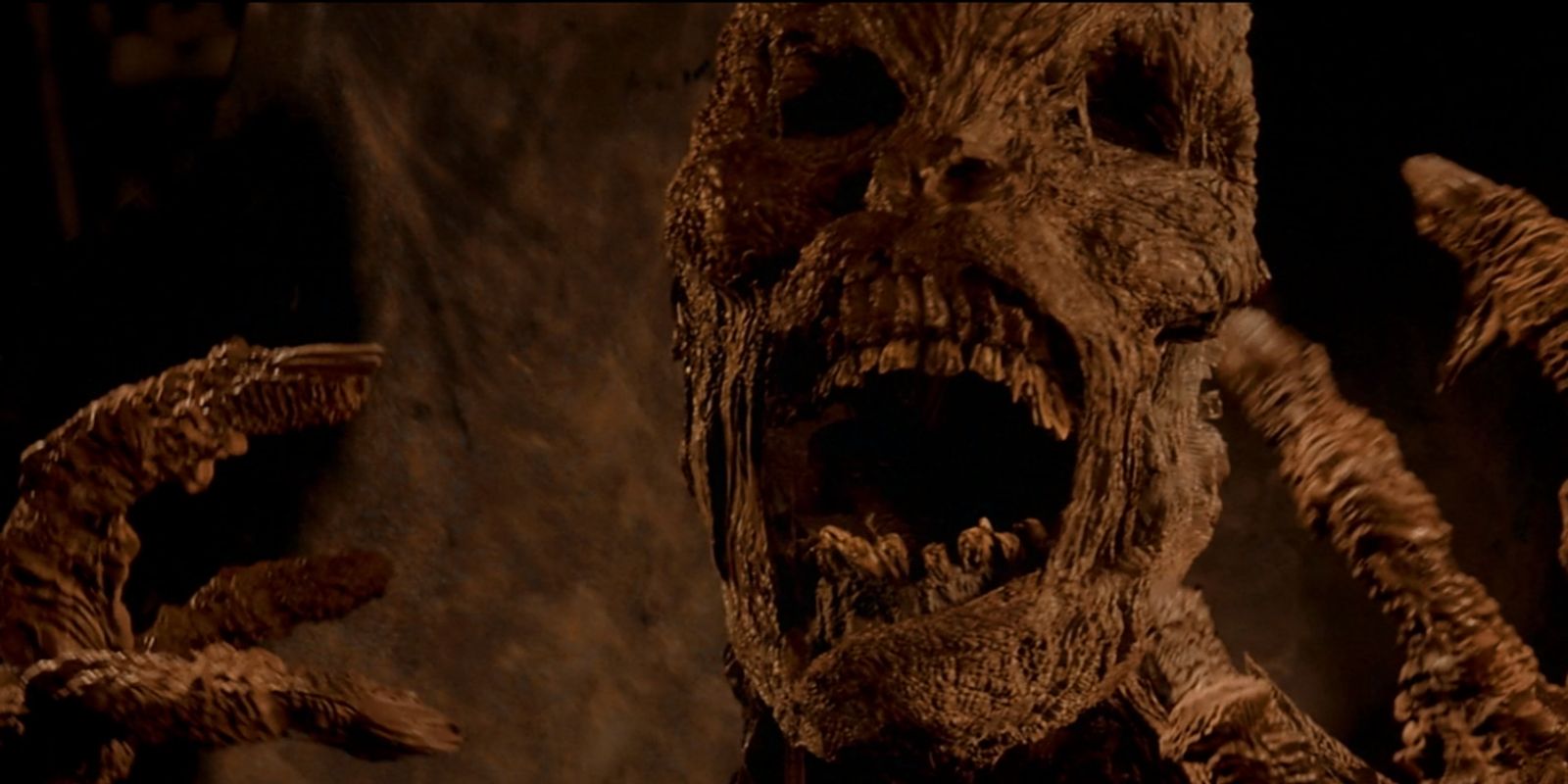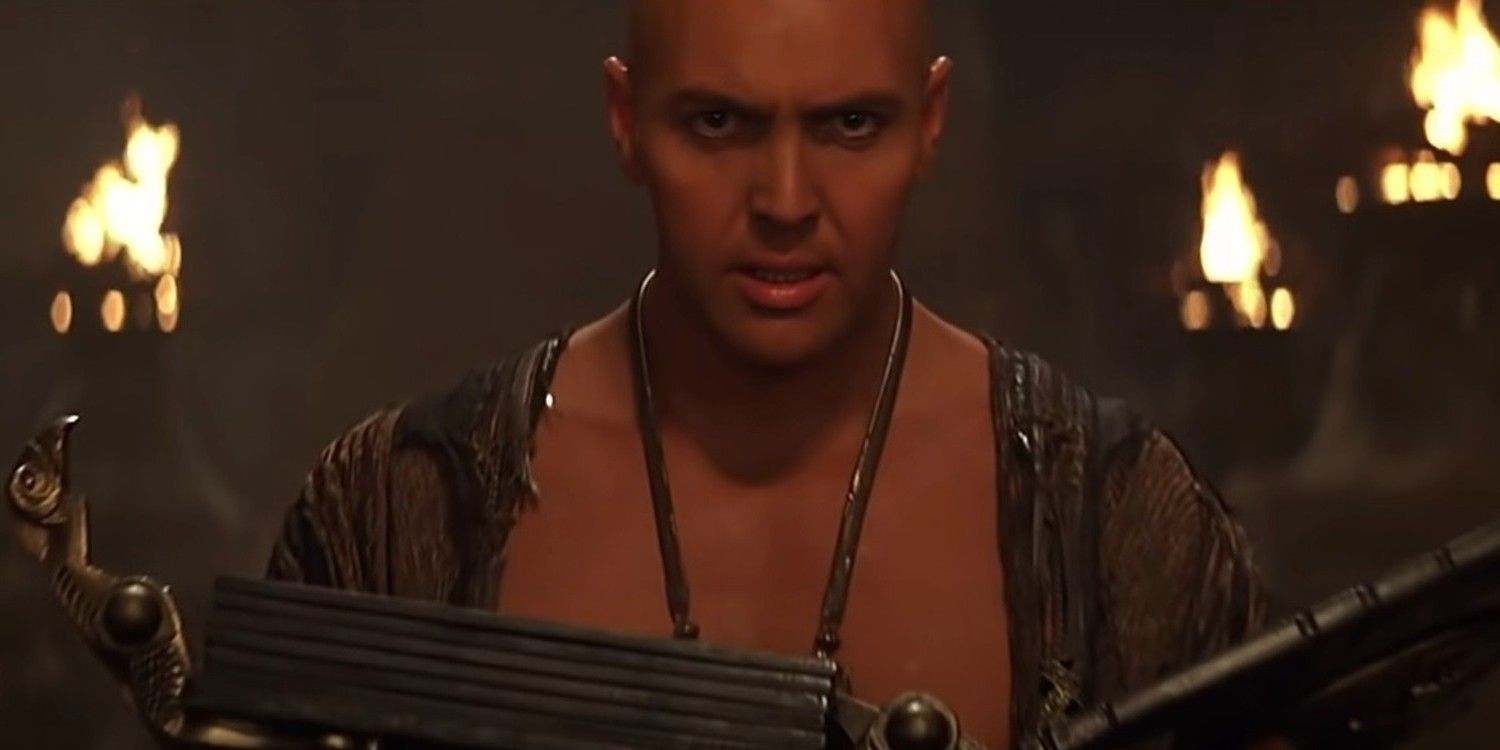The 1999 beloved epic adventure, The Mummy drew inspiration from Egyptian history with some fictional twists, which leaves questions about how much of the story is based on facts. Though movies aren’t known for being historically accurate, the action-adventure franchise introduces the audience to gods and artifacts ripped from the history books. The Mummy also created new meanings for these historical items, twisting the artifacts and figures into a plot device for a blockbuster story.
The Mummy follows adventurer Rick O'Connell, played by Brendan Fraiser, as he travels to Hamunaptra to find the Book of the Dead. During the journey he teams up with librarian Evelyn Carnahan (Rachel Weisz) and her older brother, Jonathan Carnahan (John Hannah). The travelers find the ancient city and accidentally awaken Imhotep (Arnold Vosloo). Imhotep’s mystical revival also provides him with magical powers, and he uses them to attack the adventurers in an attempt to resurrect his lost love. As Imhotep tries to use Evelyn as a sacrifice, Rick defeats the high priest by stripping him of his immortality with scriptures from the Book of the Dead, before finally stabbing him with a sword.
The horror-adventure franchise featured several figures with foundations in history, including the Medjay, the army in Hamunaptra, and the main antagonist Imhotep. Though The Mummy included these legends from Egyptian history, the backstories and their attributes are dramatized to create an engrossing fantasy plot. The mixture of fact and fiction begs the question of what is real in the 1999 adventure film. Here is a breakdown of how much is actually based on historical fact in The Mummy.
Were The Medjay From The Mummy Real?
The Medjay were a real tribe who lived in the east desert ranging from Egypt to the Red Sea. They can be traced back in history as early as 2400 B.C. as semi-nomadic people who were warriors. The Medjay were elite fighters and mercenaries that have grown in popularity in pop culture with their appearances in The Mummy and the Assassin's Creed franchise.
In The Mummy, the army is featured as modern descendants who had magical powers to defeat their adversaries, led by the beloved character, Ardeth Bay, who in The Mummy's original script was planned as a secondary antagonist. Unfortunately, they no longer exist as many died as mercenaries and warriors throughout history. There is also no evidence that there were any ties to magical or mystical practices for the historical Medjay people.
Was The Mummy's Book Of The Dead Real?
In many movies, the Book of the Dead is often romanticized and dramatized as a pseudo-religious plot device, and this is the same for The Mummy. In The Mummy it allowed the handler to bring warriors back from the dead through incantations and spells. The Book of the Dead resurrected Imhotep through the scripture read by Evelyn, and although it has the same name as one found in history, the version in The Mummy departs from the source material.
The Book of the Dead from Egyptian culture served as a guide to the afterlife. Though it is referred to as a book, the inscriptions were often found on long papyrus, tomb walls, wrappings, and even King Tut’s golden mask. Though the Book of the Dead is often associated with the gods, it doesn’t give any power to resurrect a person from the dead and did not claim to, as it merely gave instructions for those entering the afterlife.
Is Hamunaptra From The Mummy A Real Place?
Hamunaptra, or “The City of the Dead,” was a lost city where pharaohs were laid to rest in The Mummy. The city of Hamunaptra was created for the action-adventure movie and wasn’t a real city. The moniker, “The City of the Dead,” has been used for Cairo, the capital of Egypt. However, the legends included in The Mummy have never been associated with the city.
The 1960s horror film, The City of the Dead, could be another inspiration for this fictional city in The Mummy. Not only was The Mummy a dark, horror-based movie like The City of the Dead, but they also had some similarities in the plot. Both movies were inspired by historical places in the country they took place, with The Mummy in Egypt and The City of the Dead in Salem, Massachusetts. They also have the resurrection of evil, who has to be defeated in the end because they wanted to sacrifice someone important to the main character. With the many similarities, the use of “The City of the Dead” in The Mummy could be seen as an homage.
Was The Hom-Dai A Real Form Of Mummification?
In The Mummy, Imhotep was punished with the Hom-Dai curse. After killing the Pharaoh, Imhotep's tongue was cut out, and he was buried alive with flesh-eating scarab beetles and locked in a sarcophagus during his mummification. Hom-Dai was a curse meant to eternally torture Imhotep. Luckily, the Hom-Dai wasn't a real form of mummification. In Egypt, once a person had died, they were mummified, and no one was buried alive. Since mummification was a sacred part of their belief system, the process was complex and routine.
Was Imhotep A Real Person?
One of the most recognizable figures in The Mummy is Imhotep, the high priest. Though he is based on a real person and the film used the correct name, the story of Imhotep is different from what was shown in the film. In The Mummy, Imhotep had an affair with the Pharaoh's partner and was portrayed as an evil person since he was a killer, which was the opposite of the historical figure from Egypt. Not much was recorded about the life of Imhotep, but he was highly praised and deified.
During his life, Imhotep was an Egyptian chancellor to the Pharaoh Djoser and high priest of the sun god Ra at Heliopolis. It is also claimed that he was an architect of one of the most renowned pyramids, the step pyramid of Djoser. Though there weren't a lot of stories available surrounding Imhotep, his reputation for wisdom and glory shows that his life most likely wasn't similar to the one depicted in The Mummy. Imhotep also had powers from being cursed in The Mummy, another aspect of the figure that can’t be substantiated. Though not every aspect of the film is true or based on facts, The Mummy showcased some Egyptian history with dramatized twists that created a blockbuster hit. The Mummy created an adventure with a mixture of fact and fiction that still thrills audiences.

